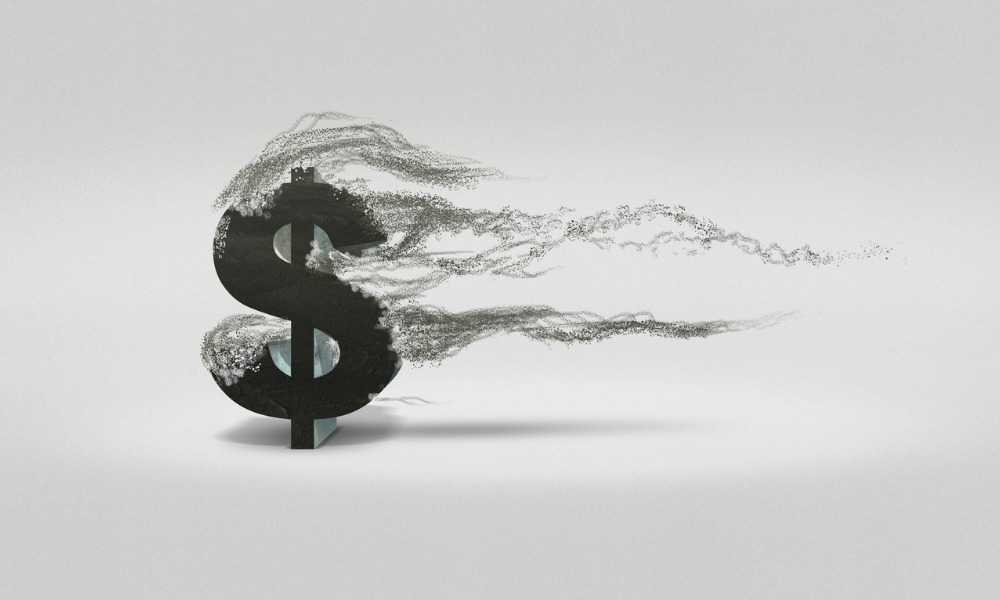If money’s tight, the last thing you need is wordplay. You’ve probably heard the words “insolvency” and “bankruptcy” thrown around. But are insolvency and bankruptcy the same thing in Canada, or is this just legal lingo playing tricks on us? It’s time to crack open the piggy bank of knowledge and find out.
Are insolvency and bankruptcy the same thing under Canadian laws?
Insolvency and bankruptcy are different legal terms, but very related terms, that are often used interchangeably. These terms are usually thrown out when referring to persons and corporations who are becoming financially challenged.
However, it’s important to discuss the distinction between these two terms.
In Canada, both fall under the Bankruptcy and Insolvency Act (BIA) and the Companies' Creditors Arrangement Act (CCAA). Both laws are administered by the Office of the Superintendent of Bankruptcy (OSB).
Insolvency and bankruptcy may be differentiated under the BIA and CCAA as follows:
-
insolvency: the financial state where a debtor cannot pay off their debts and other financial obligations as the deadline nears or after it has become due; it is considered as the condition before a debtor can file for bankruptcy under the law
-
bankruptcy: the legal process aimed at relieving debtors who are financially distressed or financially troubled, by forestalling the payment of their debts and other financial obligations, but ensures payment of their creditors at the same time
Simply put, insolvency is the debtor’s financial state, while bankruptcy is the legal process designed to address one’s insolvency.
Although both terms refer to a person’s or company’s excessive debts, being insolvent doesn’t automatically mean that the debtor becomes bankrupt. There are also other ways of preventing bankruptcy while being insolvent. However, when the financial distress of a debtor is too overwhelming, the debtor would have to declare bankruptcy.
Learn about the main difference between insolvency and bankruptcy, under the context of Canadian laws, with this video:
If you need help with your finances, talk to a legal professional, such as the best insolvency lawyers for litigation in Canada as ranked by Lexpert.
Insolvency vs. bankruptcy in Canada: what are the differences?
Insolvency and bankruptcy differ legally according to the laws of each country. In Canada, the differences between bankruptcy and insolvency are found in the BIA and the CCAA.
Here are some of the ways to distinguish insolvency and bankruptcy based on these laws:
- Different options when a person is insolvent or bankrupt
- Effects of being insolvent or declaring bankruptcy
- Bankruptcy as a last resort of insolvency
We'll be discussing these legal concepts below.
1. Options under insolvency and bankruptcy
For debtors dealing with financial distress, there are several options under the BIA and the CCAA:
-
Commercial or Corporate Proposal / Division I Proposal (Division I, Part III, BIA):
a. available for insolvent individuals, businesses, or companies
b. whose unsecured debts amount to more than $250,000, excluding the mortgage on their principal residence
-
Consumer Proposal / Division II Proposal (Division II, Part III, BIA):
a. available only for individuals
b. whose unsecured debts amount to more than $1,000 but less than $250,000, excluding the mortgage on their principal residence
-
CCAA Filing or Proceeding (Section 3 (1), CCAA):
a. available for insolvent companies
b. whose different claims against them amounts to more than $5 million
c. where the aim is
i. to restructure their businesses and financial affairs
ii. to avoid bankruptcy and closing their business
-
Bankruptcy Orders and Assignments (Part II, BIA):
a. available for debtor individuals, businesses, or companies, who committed any of the acts of bankruptcy under Section 42 of the BIA
b. can be also filed by creditors who are owed more than $1,000 and alleges that their debtor committed any of the acts of bankruptcy within six months before its filing
Among these four options, only the Bankruptcy Orders and Assignments apply to bankruptcy. The other three options apply to persons or businesses who are going through insolvency, since the filing of any of these proposals is not bankruptcy itself.
This also means that insolvent persons or businesses can opt out of declaring bankruptcy or treat bankruptcy as a last resort. They can first use a Consumer or Corporate Proposal, so that they’re protected under the law, but also allowing their creditors to collect what is due to them.
Learn more about bankruptcy in Canada and the BIA with this video:
You can learn more about the BIA and the CCAA by consulting a legal expert near you. If you live in Toronto, contact one of the Lexpert-ranked best insolvency & financial restructuring lawyers in Ontario.
2. Effects of being insolvent or declaring bankrupt
Insolvency and bankruptcy have similarities and differences when it comes to their effects on a person under financial strain. While there seems to be a stigma attached to becoming insolvent or declaring bankruptcy, going through these legal processes is actually a financially sound decision that a distressed person or company should make.
Aside from this, there are a lot of common features when a person or company files for a Proposal or when declaring bankruptcy. These include:
-
collecting of debts by the creditors are halted, but will still be paid after some time and procedures under the law
-
creditors will be involved in the whole process, such as going through a creditors’ meeting in either case
-
the debtor will be given the opportunity to financially recover (e.g. restructure its business) before resuming paying the creditors
However, these are just broad strokes of the differences and similarities of how insolvency and bankruptcy work under Canadian laws. To be sure, it’s still better to consult with a lawyer or law firm involved in insolvency or financial restructuring.
3. Bankruptcy as a last resort of insolvency
Usually, the filing of Bankruptcy Orders and Assignments happens when the insolvency proposal presented in a creditors’ meeting is rejected by most of the creditors under either a:
- Division I Proposal
- Division II Proposal
- CCAA Filing or Proceeding
In other words, the actual filing of bankruptcy will (or may) happen if the creditors reject the insolvency plan presented by the debtor. However, a rejection does not automatically declare the debtor bankrupt, because certain remedies may still be used by the debtor. For example, under the BIA:
-
for Consumer / Division II Proposal, the debtor can amend the proposed plan that was previously rejected by the creditors
-
for Commercial / Division I Proposal, the debtor can appoint a new Licensed Insolvency Trustee (LIT)
Note that when a Commercial / Division I Proposal is rejected, the debtor will be automatically declared bankrupt.
This just means that being bankrupt is not the end of the road for the debtor, which may or may not be an appropriate solution depending on their overall financial situation. As such, it’s important to consult with an insolvency lawyer so that you can know what your best options are, given your specific case.
What happens if you declare bankruptcy in Canada?
The effects of declaring bankruptcy, and its subsequent processes, can be found in the BIA, which is the Canadian law on bankruptcy. Under this law, it’s the OSB that shall declare a person or business to be bankrupt.
The following are the effects once a person or a business has been declared bankrupt:
- it is now the LIT who will deal directly with the creditors
- payments to unsecured creditors will be stopped
- garnishments against a person’s salary will also be stopped
- lawsuits filed by creditors will be stayed
- the LIT will possess all the debtor’s assets, subject to certain exceptions
- after possession, the debtor’s assets will be sold by the LIT to pay the creditors
- the debtor’s surplus income will also be paid to the creditors
Part of the declaration of bankruptcy is that the debtor will also have to attend at least two mandatory counselling, to be arranged by the LIT.
If you’re on the verge of bankruptcy, it is proper to ask for help from an LIT or an insolvency lawyer. If an LIT refuses to accept your case, you can ask assistance from the Bankruptcy Assistance Program of the OSB.
Discharging a bankruptcy
The BIA says that the debts of a bankrupt individual or business will only be relieved after a bankruptcy discharge. This is done depending on if the debtor is an individual or a corporation:
-
for bankrupt individuals:
- an automatic discharge (Section 168.1 (1), BIA); or
- a court order after application for discharge (Section 169 (1), BIA)
-
for bankrupt corporations:
- after fully satisfying all the claims of their creditors (Section 169 (4), BIA)
As an effect of the discharge, a debtor will be relieved from paying all its debts if all conditions of the bankruptcy have been fulfilled.
What cannot be discharged in a bankruptcy
However, under the BIA, not all types of debts, liabilities, or obligations are relieved in a bankruptcy discharge. The BIA states that the following will not be discharged (Section 178, BIA):
-
court-imposed liabilities: such as fines, penalties, restitution orders, or award of damages arising out of an offence, crime, recognizance, or bail
-
alimonies and supports: such as debts or liabilities arising out of an alimony or alimentary pension, or out of a spousal support and/or child support
-
dividends: where the creditor is due to receive one, which was not disclosed to the trustee
-
loans: such as those arising from the Canada Student Loans Act, the Canada Student Financial Assistance Act, or the Apprentice Loans Act
-
interest: where any of these loans or debts produce interest
This means that a person must still pay these things, even if their debts were already discharged in a bankruptcy.
How long does insolvency last in Canada?
Since insolvency is that state where a person or business cannot pay its debts on time, it follows that when they’re already financially stable that they’re not insolvent anymore. On the legal perspective, insolvency in Canada lasts until an insolvent is released from the Proposal they filed.
Although it’s upon the suggestion of the debtor on how long they can pay their creditors under a Proposal, there are some limits to it under the law. For instance, a Consumer / Division II Proposal cannot be longer than five years to pay the creditors, as set out in the proposal.
Negative data on a credit report
Related to the periods for discharging someone who is insolvent, or bankrupt, is the period in which negative information appears on their credit report. Even though a person or entity is already discharged from bankruptcy, negative information about their filing of a proposal or their being bankrupt can still appear in their credit report for some time.
Depending on the specific province, a negative report about a person’s or corporation’s bankruptcy on their credit reports will last up to six or seven years. For persons and corporations that have declared bankruptcy more than once, these negative reports on their bankruptcies will appear in their credit report for around 14 years.
Insolvency and bankruptcy: two sides of the same coin
While insolvency and bankruptcy are closely related, they’re still legally different concepts. For these two, the BIA and the CCAA provide various legal options to address financial distress—many of which can help debtors avoid bankruptcy altogether. Understanding these distinctions is important to make informed financial decisions and to seek the right kind of legal help when needed.
Still wondering if insolvency and bankruptcy are the same thing? Reach out to the Lexpert-ranked best law firms for insolvency litigation in Canada.





